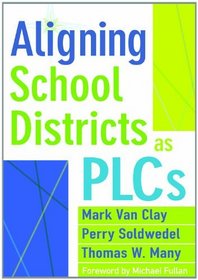Search -
Aligning School Districts as PLCs
Aligning School Districts as PLCs
Author:
In order for a learning community to best deliver upon its full potential, all levels and all roles districtwide need to become aligned around the three big ideas of a PLC: ensuring a focus on learning, building a collaborative culture, and establishing a results orientation. For each of these big ideas, there are certain non-negotiables things ... more »
Author:
In order for a learning community to best deliver upon its full potential, all levels and all roles districtwide need to become aligned around the three big ideas of a PLC: ensuring a focus on learning, building a collaborative culture, and establishing a results orientation. For each of these big ideas, there are certain non-negotiables things ... more »
ISBN-13: 9781935543398
ISBN-10: 1935543393
Publication Date: 5/31/2011
Pages: 152
Rating: ?
ISBN-10: 1935543393
Publication Date: 5/31/2011
Pages: 152
Rating: ?
0 stars, based on 0 rating
Genres:





